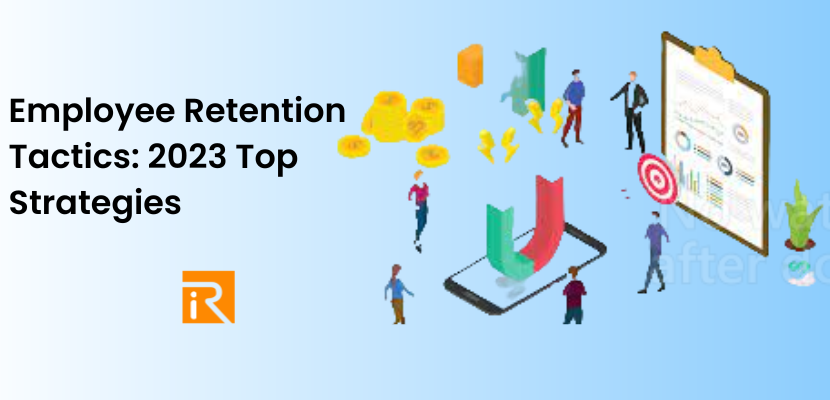Employee retention tactics are a critical concern for businesses of all sizes and industries. Companies with a 5% increase in employee retention can see a profit increase of up to 25%.
In today’s competitive job market, retaining top talent is not just about providing a paycheck but also creating an environment where employees feel valued, engaged, and motivated to stay with your organization.
In this article, we will explore the essential employee retention tactics that can help you reduce turnover and create a thriving workplace.
The Importance of Employee Retention Tactics
Employee retention is more than just a buzzword; it’s a strategic imperative. High turnover rates can be detrimental to a company’s bottom line, as recruiting and training new employees is costly and time-consuming.
Additionally, a high turnover rate can negatively impact team morale and productivity. By implementing employee retention tactics, you can create a workplace where employees feel valued and appreciated.
Understanding Employee Turnover
Before diving into retention strategies, it’s crucial to understand why employees leave in the first place. Common reasons include dissatisfaction with compensation, lack of growth opportunities, poor work-life balance, feeling undervalued, and issues with leadership or communication.
Key Factors Affecting Employee Retention
To effectively address employee turnover, let’s delve into the key factors that influence retention:
Competitive Compensation and Benefits
Employees must feel fairly compensated for their work. Offering competitive salaries and benefits packages is a fundamental retention strategy.
Career Development Opportunities
Employees seek opportunities for growth and advancement. Providing clear paths for career development can keep your team motivated.
Work-Life Balance
Maintaining a healthy work-life balance is crucial for employee well-being. Flexible work arrangements and time-off policies contribute to retention.
Recognition and Appreciation
Employees who feel appreciated and recognized for their contributions are more likely to stay. Acknowledge and reward their achievements.
Strong Leadership and Communication
Effective leadership and transparent communication are essential for a positive work environment. Leaders who listen and engage with their teams foster loyalty.
Top Employee Retention Tactics
Now that we’ve covered the key factors let’s explore actionable tactics to improve retention:
Offer Professional Growth and Development
Skills Training
Develop customized training programs that align with employees’ career goals and the company’s needs. Offer workshops, online courses, and mentorship opportunities.
Career Path Planning
Create clear career paths within the organization, including opportunities for promotions and lateral moves. Provide guidance on how employees can progress in their roles.
Skill Assessments
Regularly assess employees’ skills and discuss their career aspirations during performance reviews to tailor development plans.
Enhance Compensation and Benefits
Competitive Salaries
Conduct market research to ensure your salary structures are competitive. Offer regular salary reviews and adjustments to keep pace with industry standards.
Comprehensive Benefits
Continuously evaluate and expand benefits packages. Consider perks such as health insurance, retirement plans, wellness programs, and childcare support.
Variable Compensation
Implement performance-based bonuses or profit-sharing programs to reward exceptional contributions.
Foster a Positive Work Environment
Inclusivity and Diversity
Promote diversity and inclusion through hiring practices and training programs. Ensure that all employees feel valued and included.
Team Building
Encourage team-building activities and opportunities for cross-functional collaboration to strengthen relationships among colleagues.
Wellness Initiatives
Introduce wellness programs, stress management resources, and mental health support to address employee well-being.
Provide Work-Life Balance
Flexible Work Arrangements
Offer flexible hours, compressed workweeks, or remote work options to accommodate employees’ personal needs and preferences.
Paid Time Off
Ensure that employees have access to generous paid time off and encourage them to use it for vacations, personal time, and family needs.
Tech-Free Time
Encourage employees to disconnect from work-related devices and emails during non-working hours to prevent burnout.
Recognize and Reward Achievements
Recognition Programs
Establish a system for regular recognition and rewards, such as Employee of the Month awards or spot bonuses.
Peer Recognition
Encourage employees to recognize their peers for exceptional contributions through a peer-to-peer recognition platform.
Personalized Rewards
Tailor rewards to individual preferences, whether it’s additional time off, gift cards, or professional development opportunities.
Employee Feedback and Engagement
Open Communication
Create an environment where employees feel comfortable sharing their ideas and concerns openly with management.
Regular Surveys
Conduct anonymous surveys to gauge employee satisfaction, identify pain points, and gather feedback on company policies and initiatives.
Actionable Feedback
Act on the feedback received by implementing changes and improvements based on employee input.
Building Strong Leadership
Leadership Training
Invest in leadership development programs to enhance the skills of managers and supervisors in areas like communication, conflict resolution, and team management.
Lead by Example
Encourage leaders to model the behavior and values they want to see in the organization, fostering a culture of leadership from the top down.
Feedback for Leaders
Solicit feedback from employees about their managers to identify areas for improvement and provide leadership with opportunities for growth.
Monitoring and Measuring Retention Efforts
Key Metrics
Regularly track employee turnover rates, employee satisfaction scores, and the effectiveness of retention initiatives.
Data Analysis
Analyze the data to identify trends and areas where improvements are needed, then make data-driven decisions to enhance retention strategies.
Continuous Improvement
Adapt and refine your retention tactics based on the insights gained from ongoing monitoring and measurement.
Conclusion
Employee retention tactics are an ongoing effort that requires a combination of strategies, including competitive compensation, professional development, a positive work environment, and strong leadership.
By implementing these employee retention tactics, you can reduce turnover, boost morale, and create a workplace where your team thrives.
Remember, retaining top talent not only saves you money but also helps your organization achieve long-term success in today’s competitive business landscape






















